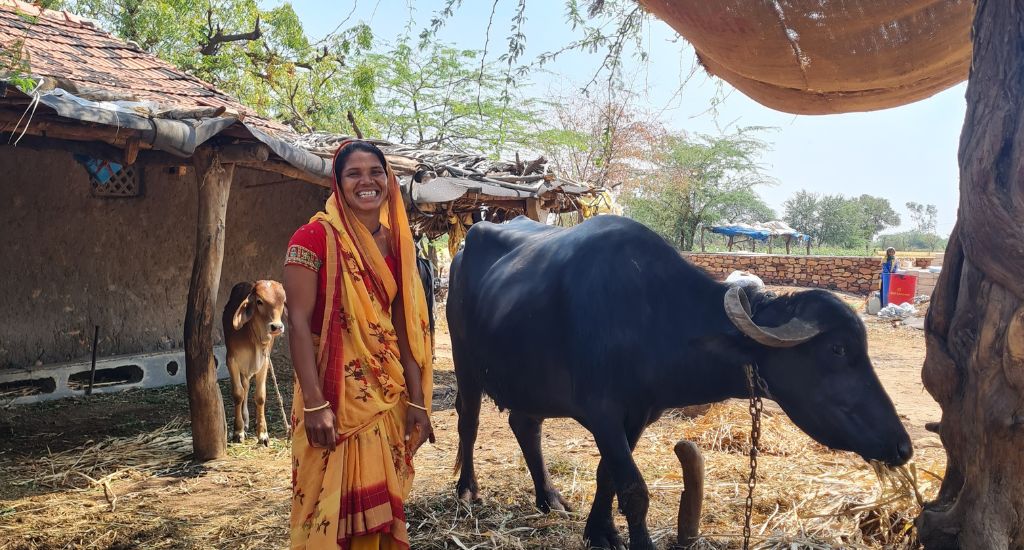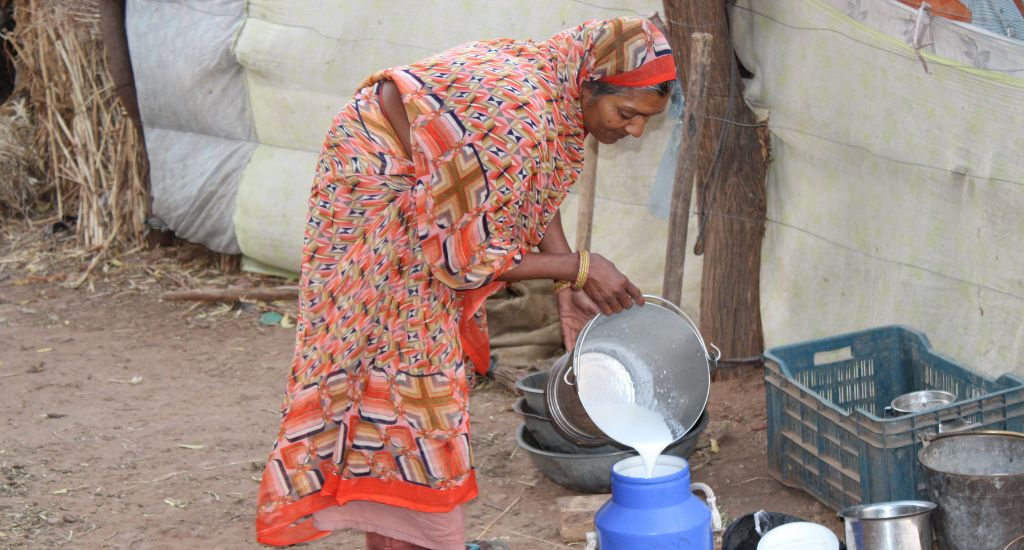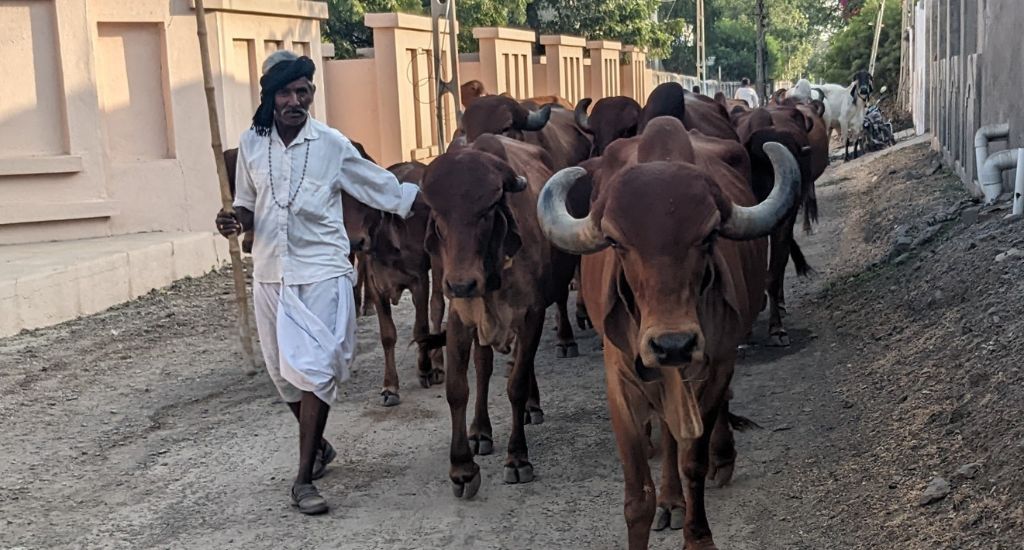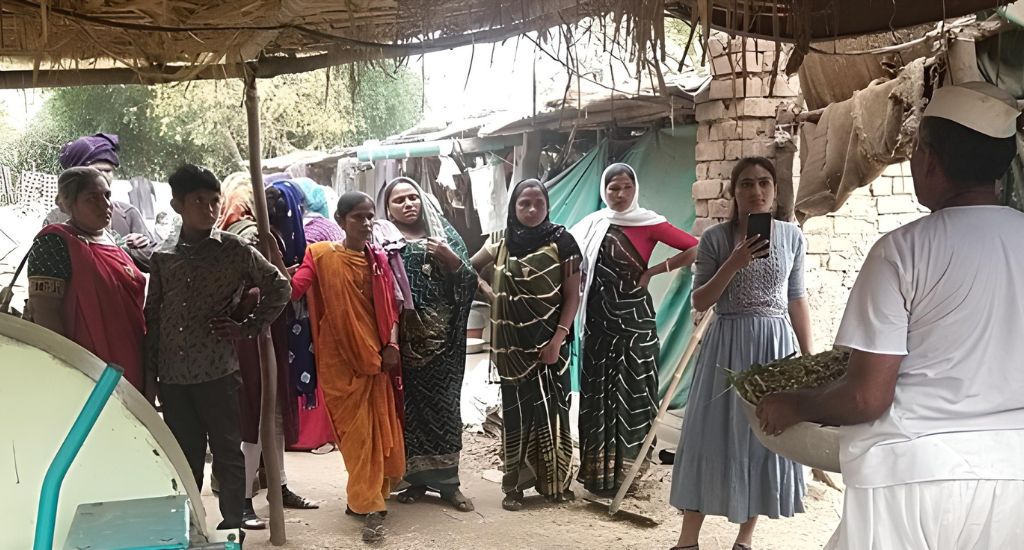
Less methane means more income for Gujarat herders
A balanced diet programme to curb methane emission from livestock helps Gujarat’s pastoral communities get more income through reduced fodder intake and increased milk production.

A balanced diet programme to curb methane emission from livestock helps Gujarat’s pastoral communities get more income through reduced fodder intake and increased milk production.
Livestock rearing is a major source of livelihood for the people of Limbala village in Gujarat. The village, which is home to nearly 300 families, lies in the heart of Saurashtra – one of the driest and harshest regions of the country.
Long dry spells and erratic rainfall in the region make it a challenge for the people to get water and fodder. Large-scale methane emission from the livestock aggravates the situation by adding to the warming up of the region.
This has been forcing the Maldharis, a community of semi-nomadic pastoralists, to migrate in search of pastures for longer durations than before.
In coordination with the National Dairy Development Board (NDDB), Aga Khan Rural Support Programme India (AKRSPI) is implementing the ration balancing programme (RBP) that aims to improve milk production and curb methane emissions by improving animal health through a balanced diet.
The ration balancing programme was introduced to the community in Limbala in 2022. The prevailing practice was to let the animals graze in the open during the day and feed them dry fodder in the evening. This, however, leads to the malnourishment of the animals, resulting in lower milk production.
Also Read | Banni Maldharis battle to rear cattle in Kachchh

Before piloting the programme, meetings were held with the community to understand the seasonal availability of fodder in the village. Subsequently training sessions on RBP were held and exposure visits to NDDB, Krishi Vigyan Kendra and DudhSagar Dairy in Mehsana were arranged.
Local girls were selected and trained as pashu sakhis (friends of animals) to help in the implementation of the programme. They were trained in data collection and dissemination of ration advisory. They were also provided measuring tapes and weighing scales to measure the animals and weigh the fodder.
Once the pashu sakhis collected the details, the data was entered into the Information Network for Animal Productivity and Health (INAPH) application. This application designed by NDDB generates ration advisory for the animals, based on the information provided.
The pashu sakhis collect the measurements periodically and advisories are generated based on these measurements once every 21 to 35 days. The pashu sakhis then pass on the advisories to the respective herders.
Hira Bavaliya, a 55-year-old herder from Limbala, got enrolled in the RBP after the initial meetings. She is a marginal farmer with 1.6 acre of land and relies on animal husbandry for her income. She has three buffalos and two calves. The milk from these animals provides her family a source of livelihood, in addition to meeting their domestic consumption needs.

Bavaliya piloted RBP with just one animal. The pashu sakhi took the initial reading of the animal and shared the ration advisory with her. Bavaliya took corrective measures as per the ration advisories and gave the animal a balanced nutritious diet. Earlier the animal consumed 20.7 kg of dry matter per day. The corrective measures reduced it to 15.74 kg per day. Dry matter is one of the major causes of methane production in the gut of ruminants.
Also Read | How smart farming is helping farmers make cows happy and more productive
After completing two rounds of ration advisory, a methane emission assessment was conducted for the animal. It was observed that cutting down on dry matter consumption reduced the methane emission by 23.9 percent per day – from 445.4 g to 338.9 g. The methane emission for each kg of milk produced fell from 55.7 g to 44 g.
Besides the reduction in methane emission, an average increase of 0.09 kg in milk production per day was also observed in Limbala. The average fat percentage also increased by 0.16 percentage points. The average cost of ration per kg of milk fell by Rs 28.39, marking a reduction of 9.55 percent. All these factors combined resulted in an average net gain of Rs 53.22 per day for the livestock owners of Limbala.

Though primarily designed to curb methane emissions, the ration balancing programme is helping the herders get additional income by reducing fodder cost and increasing milk production. The programme is currently in the pilot phase in two villages. There are 72 animals in these two villages under the programme and the plan is to enrol 500 animals before the end of 2023.
Though some problems like unavailability of green fodder during the dry periods and open grazing of animals still exist, more families are slowly joining the programme. If implemented on a large scale, RBP has the potential to bring down the methane emission from livestock significantly.
Also Read | Amul’s camel milk a lifeline to depleting Kharai camel herders in Gujarat’s Kutch
The lead image at the top shows an RBP practitioner giving a balanced diet to her livestock.
Arkajyoti Patra is a development practitioner working on low carbon agriculture pathways. Ravindra Chaudhari is a livestock expert. They are working on climate change restoration in the Saurashtra region.